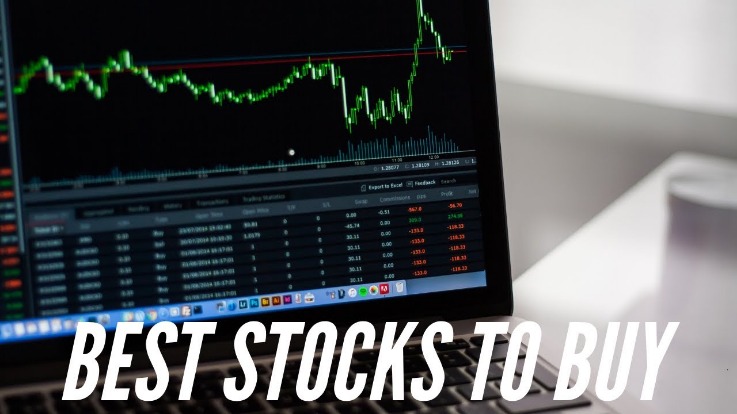The landscape of global health has been irrevocably altered, placing biosafety and infection control from a niche concern to a cornerstone of modern society. This sector, once primarily the domain of hospitals and laboratories, has exploded into a multi-faceted industry critical for everything from routine healthcare to pandemic preparedness. For investors, this represents a dynamic and rapidly expanding market. The convergence of heightened regulatory standards, technological innovation in sterilization and personal protective equipment (PPE), and a renewed public focus on health security creates a fertile ground for significant financial growth. Identifying the right opportunities within this space—from established giants to agile innovators—requires a keen understanding of the market drivers and the specific companies poised to lead. This article delves into the most promising segments of the biosafety and infection control market, offering a detailed look at the strategic investments that could define your portfolio’s performance in the coming years.
The 2025 Outlook: Investing in the Pillars of Pandemic Resilience
As we look towards 2025, the biosafety and infection control sector is expected to be fueled by several powerful, long-term trends. Governments worldwide are stockpiling critical medical supplies, a direct lesson learned from recent global health crises. This is not a temporary reaction but a permanent shift in national security strategy, creating a sustained, high-volume demand for advanced PPE, diagnostic tests, and sterilization equipment. Furthermore, the biotechnology and pharmaceutical industries are in a perpetual state of growth, necessitating sophisticated containment solutions for BSL-3 and BSL-4 laboratories where dangerous pathogens are studied. Companies that provide single-use bioprocessing containers, high-efficiency particulate air (HEPA) filtration systems, and automated decontamination technologies are positioned for exceptional growth. This macro-environment makes the entire sector compelling, but investors should focus on firms with strong intellectual property, scalable manufacturing capabilities, and global distribution networks.
Beyond the lab, the entire healthcare infrastructure is being upgraded. Hospitals are redesigning ventilation systems, clinics are adopting more stringent surface disinfection protocols, and even public venues are investing in air quality monitoring. This creates a vast market for companies that provide integrated solutions. Investors should monitor firms that are leaders in areas like ultraviolet-C (UVC) disinfection robotics, antimicrobial coatings, and smart waste management systems for medical facilities. The biosafety and infection control stock of 2025 will likely be a company that successfully bundles these technologies into a comprehensive, data-driven package for its clients. For those seeking to understand the financial metrics and real-time performance of these key players, resources like Bloomberg Finance biosafety and infection control stocks provide indispensable data and analysis to inform your investment thesis. The shift from reactive to proactive infection control is the single most important trend, and the companies enabling this transition will command significant market value.
Unearthing Value: The Potential of Biosafety Penny Stocks
While large-cap companies offer stability, the most explosive growth potential often lies with smaller, innovative firms trading as penny stocks. These companies, typically with share prices under $5, are often at the forefront of disruptive technologies. In the biosafety and infection control arena, this could include startups developing novel non-toxic disinfectants, breakthrough diagnostic platforms for rapid pathogen detection, or new materials for more protective and biodegradable PPE. The key for investors is to separate the truly innovative from the speculative. Due diligence is paramount; one must look for companies with a clear path to regulatory approval, proven management teams with industry experience, and a defined market for their product. The volatility is high, but the reward for identifying a winner early can be substantial.
Consider a company focused on a new polymer that retains antimicrobial properties for weeks, ideal for high-touch surfaces in public transportation. Or a firm that has developed a portable, smartphone-connected device that can detect specific airborne viruses in real-time. These are the kinds of innovations that define the next generation of infection control. When evaluating these low priced under valued biosafety and infection control stock opportunities, it’s crucial to assess their burn rate and cash reserves. These early-stage companies often operate at a loss as they ramp up research and development. A strong cash position ensures they can navigate the long road to commercialization without excessive dilution of shareholder value through constant new stock offerings. Platforms like Yahoo Finance and Google Finance are essential tools for tracking these financial vitals, though their data on micro-cap stocks can sometimes be delayed.
Strategies for Day Trading Volatility in the Biosafety Sector
The biosafety and infection control market is not just for long-term investors; it presents unique opportunities for day traders who thrive on volatility. This sector is highly susceptible to news-driven price swings. An announcement of a new emerging infectious disease in a specific region, a government contract award, or the release of positive clinical trial data for a new antiviral drug can cause related stocks to spike. Day traders can capitalize on this by closely monitoring news feeds, public health announcements from bodies like the WHO and CDC, and regulatory filings from companies. The key is to have a predefined watchlist of stocks across the subsector—PPE manufacturers, diagnostic test makers, and vaccine producers—as news often creates a ripple effect.
Liquidity is a critical factor for day traders. While penny stocks can see massive percentage gains, their low trading volume can make it difficult to enter and exit positions at desired prices without significantly impacting the stock price. Therefore, many successful day traders in this space focus on mid-cap companies with higher daily trading volumes. Technical analysis becomes a vital tool here. By analyzing chart patterns, volume trends, and key support and resistance levels, traders can make informed decisions on entry and exit points. For instance, a breakout on high volume from a consolidation pattern following a positive news catalyst can be a strong buy signal. It is a high-risk, high-reward approach that demands discipline, a solid understanding of market mechanics, and the ability to act quickly on emerging information.


